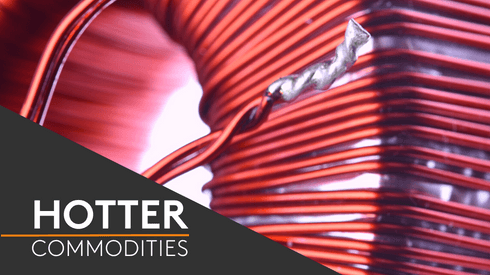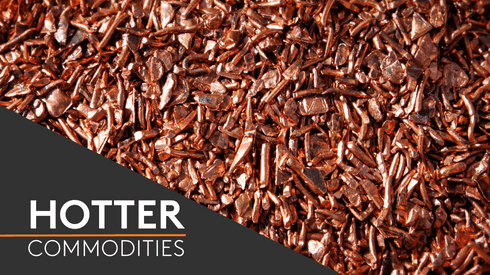This comes after a 1.2% average gain on Tuesday that saw a 2.1% rise in nickel prices and a 1.6% gain in copper prices.
The precious metals are for the most part little changed this morning with gold prices off 0.1% at $1,255.60 per oz, the main mover being palladium that is up 0.4% at $819.30 per oz. Palladium prices also climbed 0.4% on Tuesday, while the rest of the precious metals complex dropped an average of 1.6%.
Metals prices on the Shanghai Futures Exchange are down across the board with losses averaging 1.1%, led by a 2% drop in zinc prices. Copper prices are down 0.7% at 46,550 yuan per tonne.
Spot copper prices in Changjiang are off 0.5% at 46,520-46,720 yuan per tonne and the LME/Shanghai copper arb ratio is trading at around 8.10.
In other metals in China, gold and silver prices on the SHFE are little changed, while steel rebar prices are down 0.8% and September iron ore futures are down 1.3% on the Dalian Commodity Exchange.
In international markets, spot Brent crude oil prices are down 0.5% at $50.85 per barrel and the yield on the US ten-year treasuries has eased to 2.28%.
A slight cooling in geopolitical tensions as kept equities buoyant with the Euro Stoxx 50 closing up 0.5% on Tuesday, while the Dow closed up 0.2%. Asia is generally weaker this morning with the CSI 300 down 0.3% and the ASX 200 is off 1%. Markets in Japan, Hong Kong and South Korea are closed for public holidays.
The dollar index at 99.00 is flat in low ground as the market consolidated ahead to this evening’s US Federal Open Market Committee (FOMC) interest rate decision and FOMC statement. The market is not expecting a rate rise, but is on tenterhooks in case the Fed elaborates on reducing its balance sheet. The euro at 1.0927 is poised just below recent highs with its focus on France’s second election vote on Sunday May 7, the sterling is holding up well at 1.2909, the yen is weakening at 112.09 and the Australian dollar is treading water at 0.7507.
In emerging market (EM) currencies, the yuan is flat at 6.8914 and most other EM currencies we follow are on a front footing, especially the ringgit, suggesting a degree of confidence/risk-on in the broader markets.
Last night US total vehicles sales data showed sales were running at an annualised rate of 16.9 million units (mu) in April, which was below an expected 17.1 mu, but above March’s 16.6 mu. Today, there is unemployment data out in Spain and Germany, plus UK construction PMI, EU GDP and PPI, with US data including ADP non-farm employment change, services PMI, ISM non-manufacturing PMI, crude oil inventories and then the FOMC decision and announcement at 7pm BST.
The early run up in LME prices on Tuesday faltered in the cases of copper, lead and zinc, while aluminium, nickel and tin held on to some of their price gains. As such, underlying sentiment does not seem unified at the moment and the mixed bag of manufacturing PMI data out on Tuesday has raised some doubt over how strong the underlying global economy is. Given this, it seems unlikely that consumers will feel the need to chase prices higher, so we would look for more consolidation, although bouts of tightness in the some of the metals could lead to short-covering.
Gold prices continue to retreat and with the yen also weakening it does look as though demand for havens has waned. This could accelerate if there is no shock in the French election and if tensions between the USA and North Korea calm down. Silver and platinum are looking weaker too, while palladium is off its highs, but remains strong overall – whether a slower auto markets starts to weigh on palladium prices remains to be seen.
Metal Bulletin publishes live futures reports throughout the day, covering major metals exchanges news and prices.




